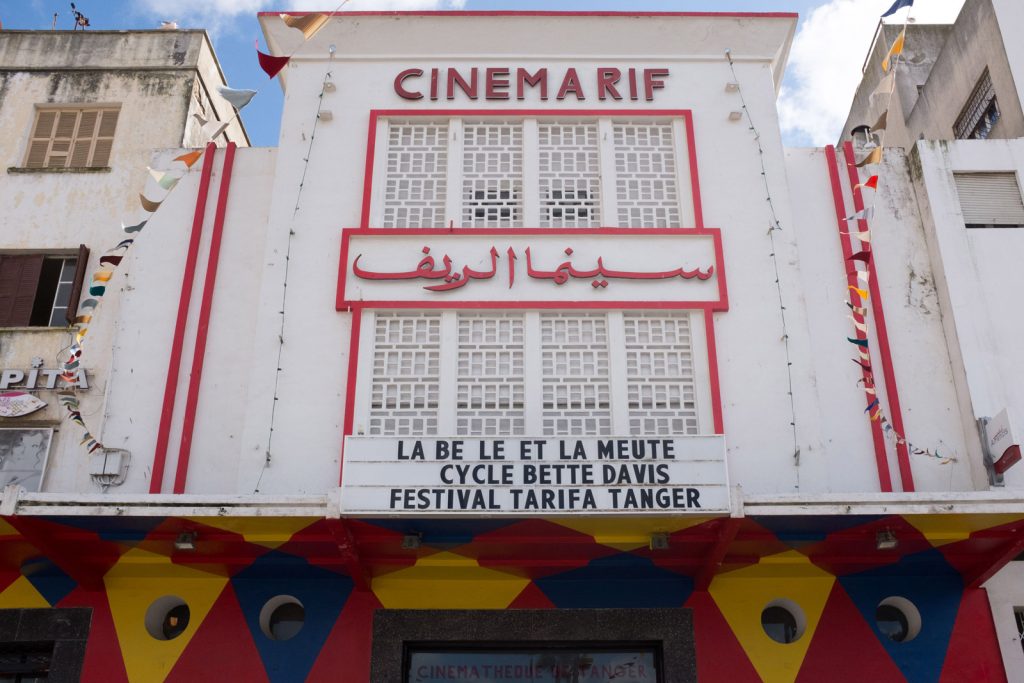CH Edition: Morocco
For our fourth hosted travel experience we visited three magical cities, each full of inspiring craft, design, food and people

COOL HUNTING Edition hosted travel experiences are our version of a couture line. Like the fashion analogy, they’re a halo product, a pinnacle, a dream. They share our curiosity as editors, are shaped by the people we know and meet during our research and are laced with powerful, scenic, emotional, delicious, reflective, layered and beautiful moments. Each experience—Zambia (twice!), Cuba and now Morocco allow our guests to see a place through our eyes, meet locals, experience things most tourists can’t or don’t seek out with an added benefit of traveling in a group of twenty four people who would likely never consider traveling in a group, each curious, creative and well-traveled.
Instead of reading about our travels and discoveries, these invited guests get to come along for the ride and leave the details to us. It took many trips and more than two years to plan this adventure. Morocco offers so many beautiful places, climates and geographies that a week’s visit without spending half of your time on the road requires difficult trade offs and a limited set of many possible experiences. Our theme and goal was to show the energy and tension of where and how new-meets-old. We experienced this in the places we experienced, stayed, visited, ate, danced and shopped as well as through the locals we shared that with.
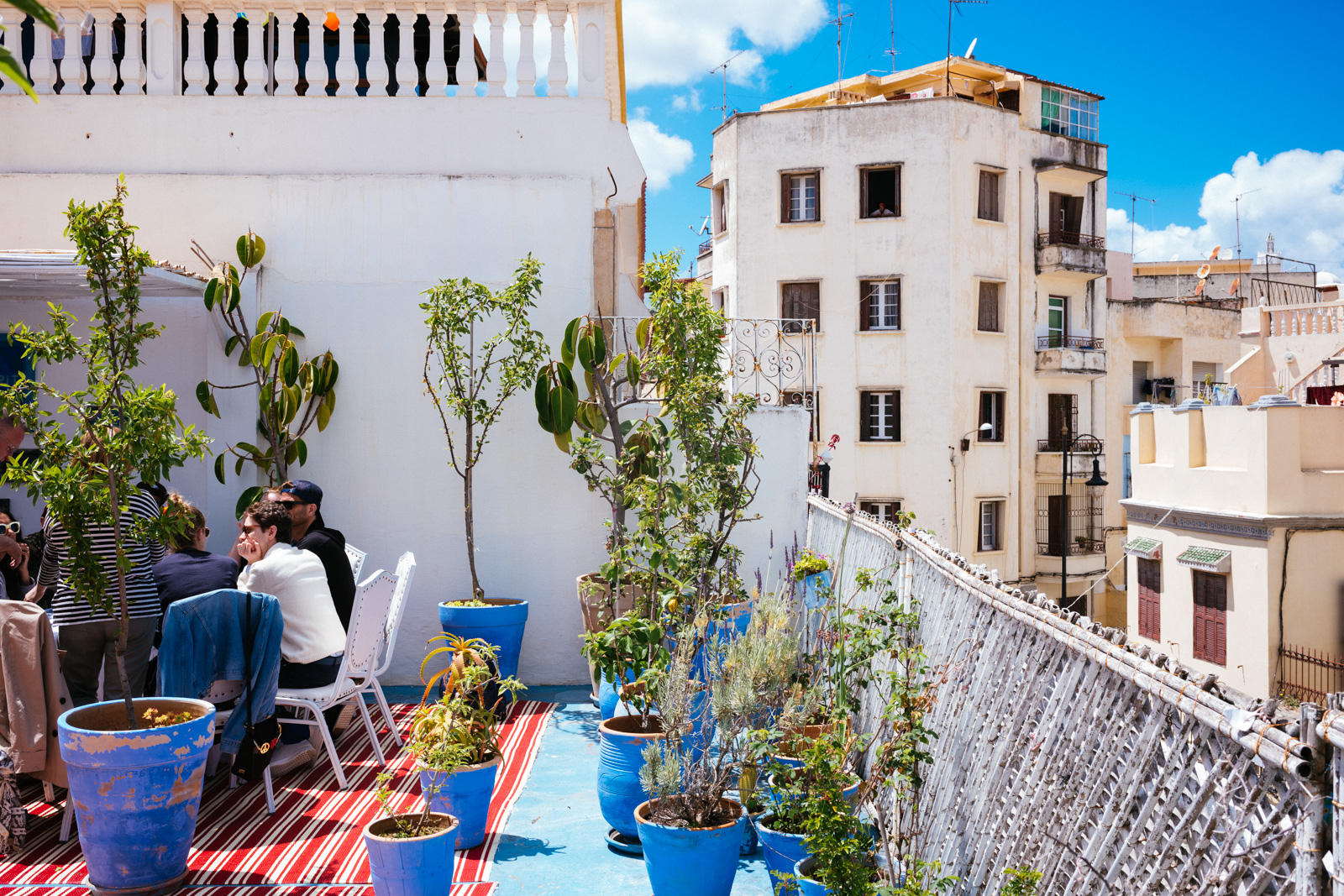
From Tanger to Fes to Marrakech we met a generation of creatives who are working with artisans to reimagine Moroccan aesthetics, craft and culture as well as intrepid entrepreneurs who converted and created amazing buildings, turning them into restaurants, riads and museums.. Over seven days we immersed ourselves in local art, craft, food, film, music and more. Our muse and collaborator for the trip was Fes-based Nina Mohammad-Galbert whose Artisan Project business embodies this Moroccan movement of new-meets-old. Born in San Francisco to Palestinian parents, she moved to Fes seven years ago and seized the opportunity to work with incredibly talented artisans express their creativity in new ways. We met five years ago and have collaborated on several projects over the years, including our latest Omakase collection.
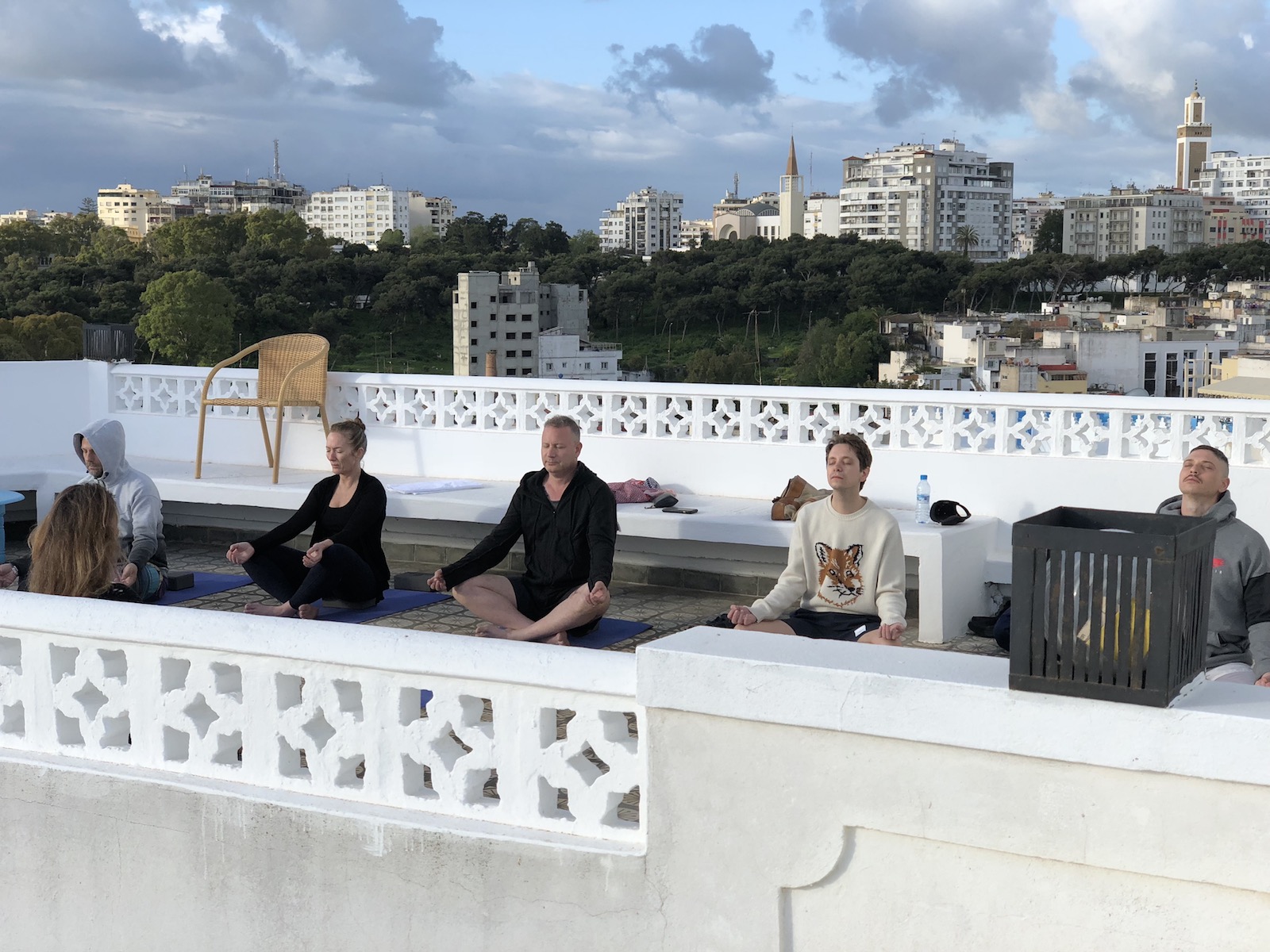
Starting in Tanger, guests stayed at the luxurious Riad Mokhtar and Nord Pinus—with the former offering a striking view of the city, and the latter overlooking the Strait of Gibraltar. We made both our home for three days, with rooftop drinks at one and morning yoga at another. Each offered a window to Moroccan design—and a destination for friendships to form among the group.

Several Tangerinos helped us get a feel for the city. We saw the city’s neighborhoods and vistas through the eyes of author and poet Phillipe Guiget Bologne; visited artist Abdelghani Bouzian at his studio in the hills; joined the children at DARNA for crafts and vocational training; viewed short films by young female Moroccan directors and had a discussion with them at Cinéma Rif, Morocco’s only art house cinema and not-for-profit film foundation and so much more. Every experience knit together Tanger of the past with the talent driving creativity, innovation and care for the future.
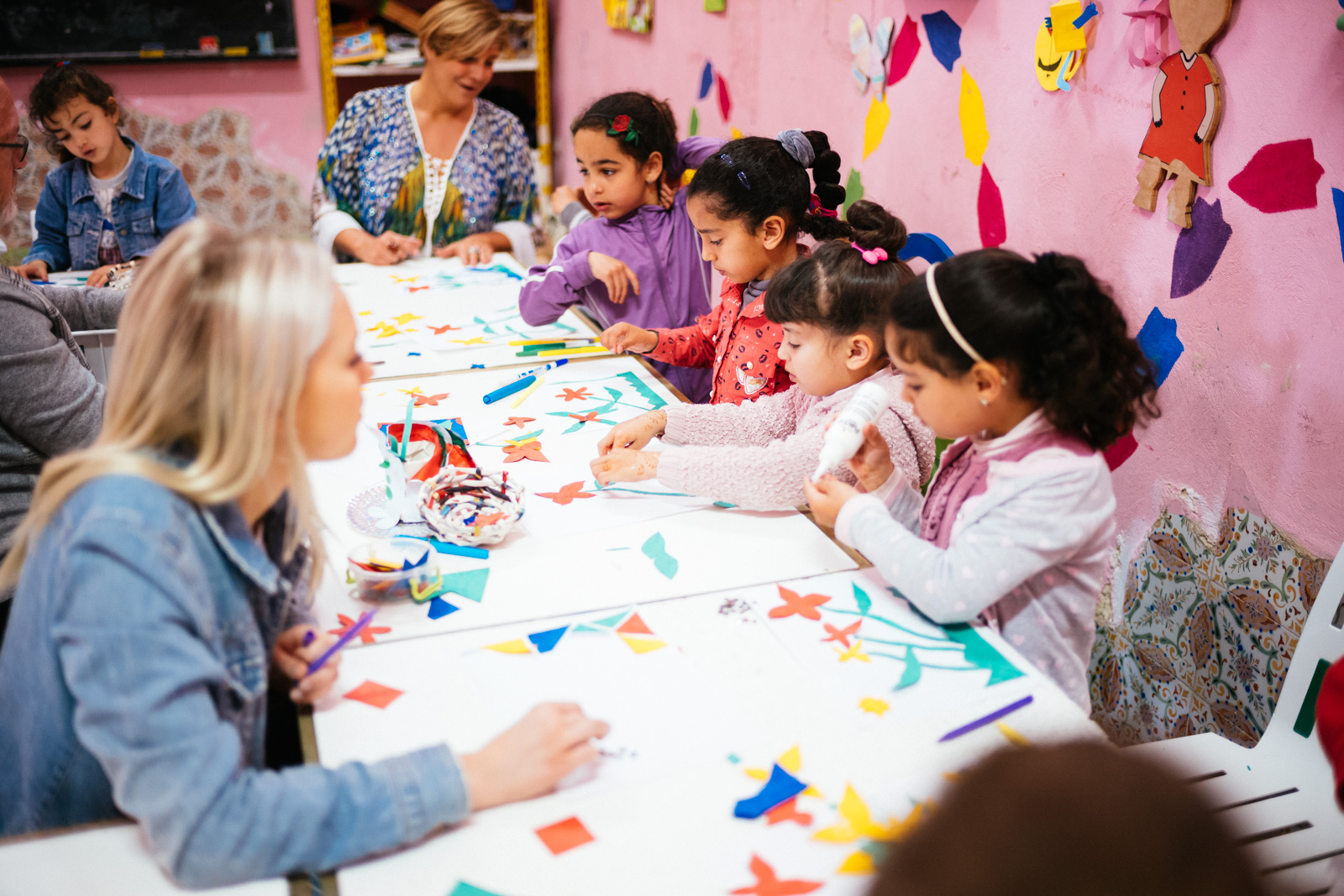
Unsurprisingly, spending time with the kids and teachers at DARNA was a highlight for many in our group. Thenot-for-profit foundation, created and run by local women, is a thriving example of community-driven activism. Its doors are open for children of all ages, many of whom are immigrants, refugees, runaways and orphans, providing education and practical training along with a supportive community, food and plenty of love. Dedicating time to locals has always been a pillar of COOL HUNTING Edition travel as it allows people to connect with locals who share their experience.

Whether painting, cooking or running races in the playground, our group poured our hearts into the school. We also partnered with DARNA in a greater respect, providing new equipment for their photo lab, vocational kitchen, and soccer balls for the playground.

Our last night in Tanger celebrated the opening of week-long COOL HUNTING pop-up art gallery. We employed two local curators, Altier Kissina and Hamza El Messari who pulled in art from some of our favorite artists in working in Tanger. The show—which featured everything from photography to sculpture, embroidery and more—was open all week for locals to enjoy. It was a celebration of Tanger’s burgeoning art scene and an opportunity for our guests to support it. To cap the evening we threw an after party at an amazing private home with a North African infused dance set DJ’d by Guedra Guedra that you can listen to on Soundcloud.

We could have never predicted that the drive from Tanger to Fes would carry such power and open our eyes. This was not the Morocco people think of when they think of the nation—the verdant hills in full bloom, the dynamism and the surprising. We paused outside of Chefchaouen to view the blue city from afar. But it was vistas along the water that captured our hearts, and a rainbow over farmland that etched in to our souls.

Outside of Chefchaouen we stopped to stretch our legs in Akchour, a park known for its waterfalls and scenic hikes where you’ll rare find foreign tourists. For lunch we visited Ermitage d’Akchour where we enjoyed local tagines of both goat and chicken plus conversation with the venue’s owner—a very spiritual and intriguing musician and healer, whose impromptu chant circle in the middle of a surprise hail storm surprised us all. We enjoyed classic Moroccan mint tea and orange slices dusted with cinnamon beffore heading back in to the vans.
Arriving in Fes alongside the setting sun we passed the newer parts of the city and headed to the medina, the largest in the world, where the high-walled streets are too narrow for cars to pass. A short walk brought us to our home for the next few days, the eclectic-yet-fabulous Le Jardin des Biehn, a former sultan’s harem playground, transformed by the Biehn family surprises and delights in its details, layers and passions. The large Riad features rooms decorated with Michele Biehn’s extensive collection of textiles and objects found throughout northern Africa. Our visit also inaugurated the property’s new extension into an adjacent building with five new suites.

The next day our tour of the medina finished at the COOL HUNTING + Artisan Project pop-up store. With textiles, jewelry, decor, wood and leather goods and more, every carefully selected item had a focus on tradition and impeccable craftsmanship.
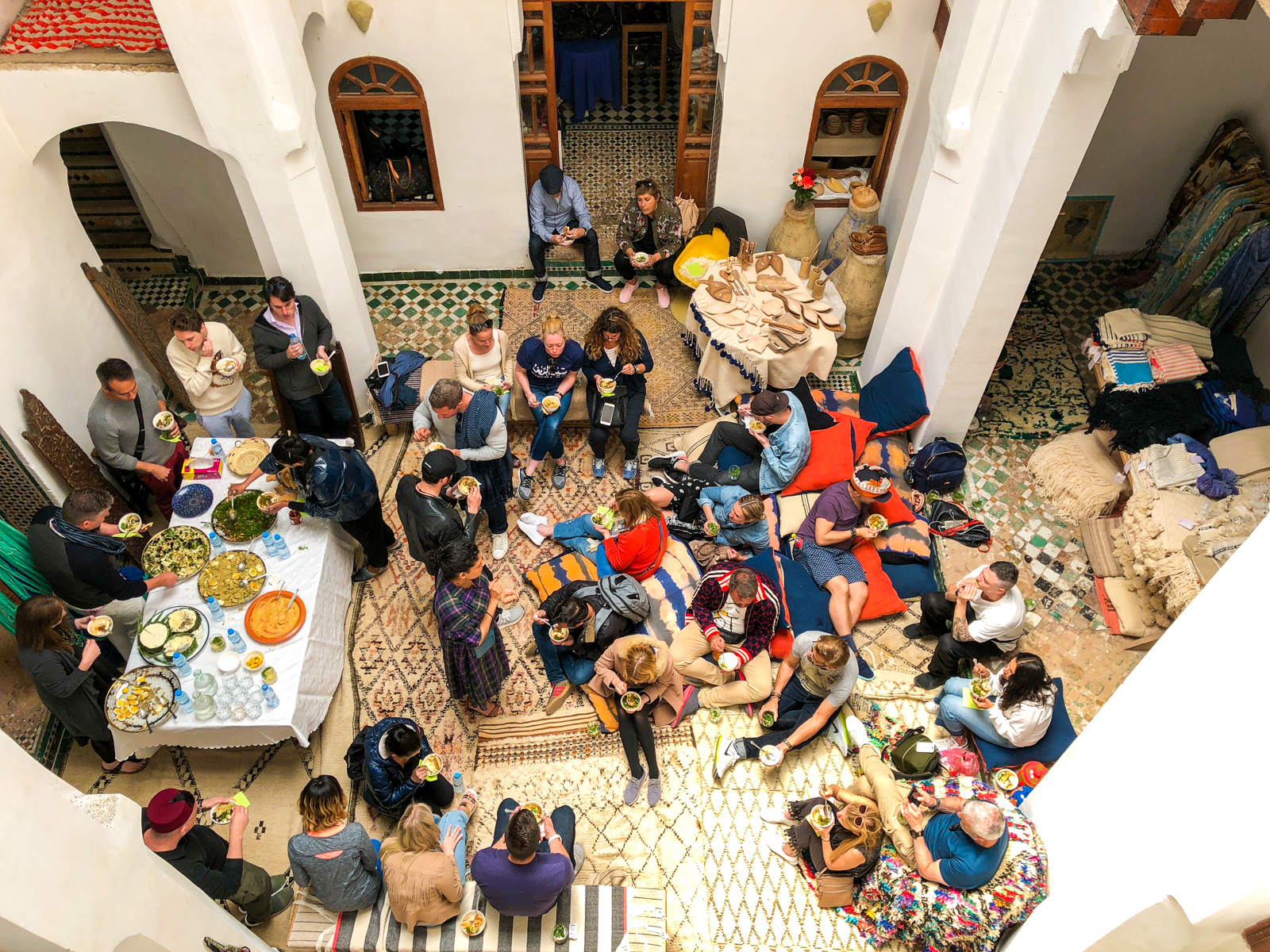
A delicious new Moroccan vegetarian lunch was catered by our food partner and interior designer Mina Abouzahra. Born in Holland from Moroccan parents, Abouzahra has studied her Moroccan routes extensively and offers a unique point of view that is creatively Moroccan but decisively Dutch at the same time.

One evening in Fes we brought the group to a mountaintop overlooking the city for a picnic dinner. While the view was stunning, it was the setting sunlight over fields of Poppy flowers that truly made the evening special, along with a group of local musicians playing traditional songs while also killing their rendition of “Get Lucky.”

We took a day trip to the Middle Atlas mountains to visit a local souk that rarely sees foreign tourists, where we met many Amazigh people selling their wool, rugs, livestock and more; the 110 year old donkey attendant charmed us all. From there we continued on to the Coperative des Tisseuses Ain Leuh women’s weaving cooperative where many of the Artisan Project rugs are made. We learned how they weave, got to try it ourselves and enjoyed tea and homemade cookies with the weavers.

Before heading back to Fes we stopped for lunch with an Amazigh family who not only cooked a delicious meal but shared some of their traditional song and dance.

The patriarch of the family is a rug dealer and after lunch guests had the opportunity to shop with the satisfaction of knowing their purchases were only one layer removed from the makers, unusual in the Moroccan rug world.
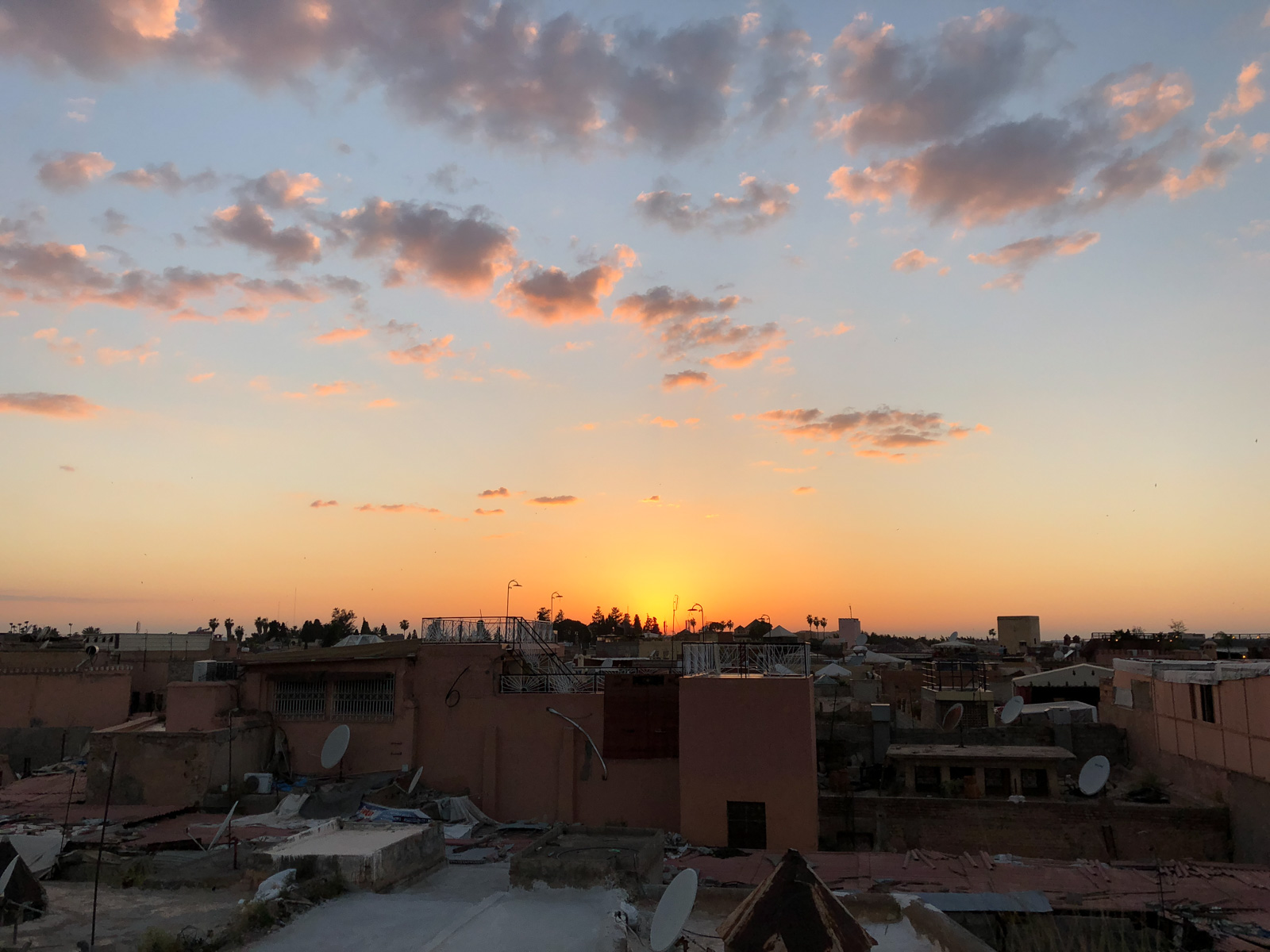
Landing in Marrakech the following evening we headed to the Maison de la Photographie museum, housed in a traditional riad with a glorious terrace view of the city. With mesmerizing tiling on each floor, the museum (of course) boasts some stunning photography that’s both alluring and educational—offering insight into the different histories across the country. From there we dined on the rooftop of Nomad restaurant with a view of the spice market, watching and listening as the sun set over the medina and the call to prayer sang out over the city.

While a visit to the glorious Jardin Majorelle is a given, few get to meet it’s creative director as our guests did. We also explored the nearby YSL Museum (which opened last year). The gardens, famously bought by Yves Saint Laurent and Pierre Bergé in order to save them from ruin, also act as a quasi backyard for Saint Laurent and Bergé’s private home and gardens. Hidden away behind tall fences and lush greenery, the house is not open to the public, but the COOL HUNTING travelers were able to get an intimate, private tour of the residence. Between the art hanging on the walls, the exquisite fabrics and tiling, the countless books, incredible lighting, this colorful home was a sight to behold.

A short drive outside of Marrakech, the peaceful Capaldi played host to our group for our last two nights and was host to our COOL HUNTING Morocco party—where black tie and canapés met camels, snake charmers and a poolside bonanza DJ’d by our friends Chances With Wolves. The perfect send-off for a positively magical 10 days in Morocco.
Stay tuned this week as we focus on several of our favorite parts of our Moroccan travels.
Lead image by Daniel Shiplacoff all others by Josh Rubin
